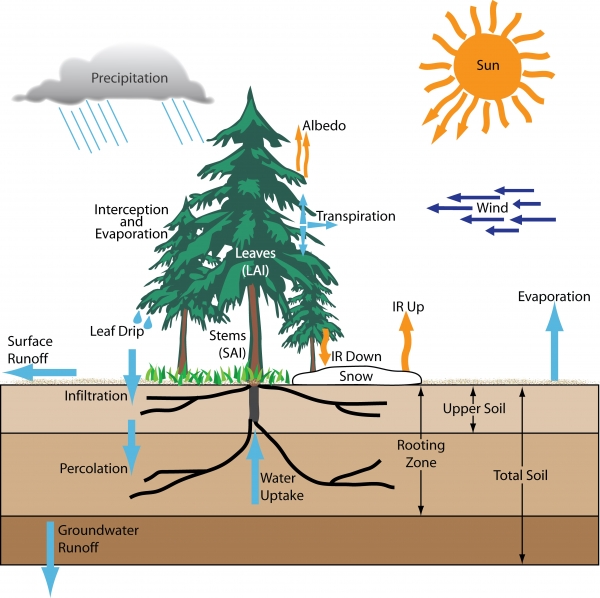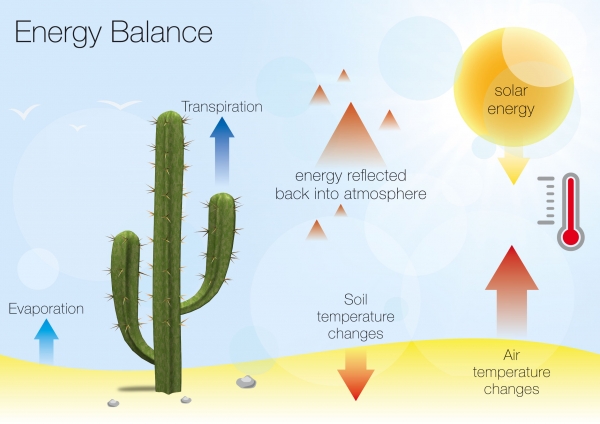HEAT UNIT CONCEPT
Many physiological processes such as respiration, photo- synthesis, germination, flowering, protein denaturation and the physical processes like, transpiration, evaporation etc are temperature dependent.
The heat unit concept assumes that there is a direct and linear relationship between plant growth and temperature. It starts with the assumption that the growth of plants is dependent on the `total amount of heat` to which it is subjected during its life period.
The heat units are also called, as the Degree Days, Growing-degree-days (GDD), effective heat units or growth units.
A Growing Degree Day or a heat unit is defined as the departure from the mean daily temperature above minimum threshold temperature. This minimum threshold temperature is the temperature below which no growth takes place.
The threshold temperature varies with different plants and its varieties. For the majority of crops it ranges from 4.5 to 12 o C. The higher values are for tropical plants and the lower values are for temperate plants.
The growing degree days are calculated as

Where,
TMAX and TMIN are the maximum and minimum temperatures of the day respectively TC is minimum threshold temperature of the crop called as the base temperature.
Base temperature of some crops (In degree Celsius)
Pea 1 – 2 Oats 4 – 5
Wheat 3.0 4.5 Groundnut 8 10
Barley 3.0 4.5 Tobacco 13 14
Sugar beet 4 – 5 Pumpkin 12
Rice 10 12 Lentils 4 5
Sorghum 8 10 Carrot 4 5
Maize 8 - 10
Modified equations of Heat units:
(1) Photothermal Unit (PTU)
Nuttonson (1948) attempted to improve the GDD concept by applying the Photothermal unit to be used in climatic studies.

Where, GDD is the growing degree days and
N is the maximum possible sunshine in hours.
(2) Heliothermal Unit (HTU)
Heliothermal unit makes use of actual number of bright sunshine hours instead of daylength used in calculating photo thermal units. It is given by,

where, GDD is Growing degree days and
n is the actual bright sunshine hours as recorded by Campbell- Stokes sunshine recorder.
(3) Energy degree unit (EDU)
By using solar radiation (energy) value, the GDD is modified as,

Where E = daily accumulation of solar radiation in Langley per day.
(4) Soil moisture growing degree-day (SMGDD)

Where X = daily available soil moisture in %
C = Soil moisture capacity in %.
Application of heat unit concept in Agriculture
The simplicity of the degree-day method has made it popular in agriculture.
1. It is used in guiding agricultural operations and planning land use.
2. It has been adapted to flowering time to parent varieties in cross pollinated crops for synchronizing the flowering time for breeding and seed production.
3. It is used for the forecast of crop harvest dates and quality.
4. It is also applied to the problems of growth and development of insects, pests, birds and other animals.
5. It is applied in estimating the likelihood of the successful growth of a crop in an area in which it has not grown earlier.
6. It is also applied to the selection of crop varieties to be grown in a new area.
Drawbacks or limitations of heat units
The degree-day concept is very simple to use. But it has some drawbacks.
1. It lacks theoretical soundness.
2. More weightage is given to high temperature.
3. The daily range of temperature is not taken into consideration.
4. Only one threshold value is used from the sowing to harvesting. No any change is allowed with the advancing stage of crop development.
5. Net response of plant growth and development is to the air temperature measured in a Stevenson screen but leaf temperature is no considered.
6. The effects of latitude, altitude and topography on crop growth not be accounted for.
7. Soil fertility may affect the crop maturity. This is also not explained in heat unit system.

Energy and water balance
Energy balance
Infrared Thermometer

